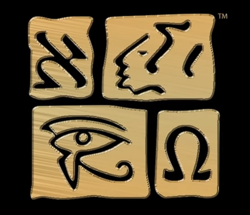
FAIR is a non-profit organization dedicated to providing well-documented answers to criticisms of the doctrine, practice, and history of The Church of Jesus Christ of Latter-day Saints.
FAIR Answers—back to home page

Believing that one of the papyrus rolls contained, "the writings of Abraham while he was in Egypt," and "purportedly written by his own hand, upon papyrus,"[1] Joseph commenced a translation. The Book of Abraham was the result of his work.
The translated text and facsimiles of three drawings were published in the early 1840s in serial fashion in the LDS newspaper Times and Seasons. The entire work was published in 1852 in England as part of The Pearl of Great Price, which was later canonized as part of LDS scripture.
Joseph Smith had in his possession three or four long scrolls, plus a hypocephalus (Facsimile 2). Of these original materials, only a handful of fragments were recovered at the Metropolitan Museum. The majority of the papyri remains lost, and has likely been destroyed. Critics who claim that we have all, or a majority, of the papyri possessed by Joseph Smith are simply mistaken.
The Egyptian characters on the recovered documents are a portion of the "Book of Breathings," an Egyptian religious text buried with mummies that instructed the dead on how to successfully reach the afterlife. This particular Book of Breathings was written for a deceased man named Hor, so it it usually called the Hor Book of Breathings.
Other than the vignette represented in Facsimile 1, the material on the papyri received by the Church, at least from a standard Egyptological point of view, does not include the actual text of the Book of Abraham. This was discussed in the Church publication, the New Era in January 1968.
Notes

FAIR is a non-profit organization dedicated to providing well-documented answers to criticisms of the doctrine, practice, and history of The Church of Jesus Christ of Latter-day Saints.
We are a volunteer organization. We invite you to give back.
Donate Now